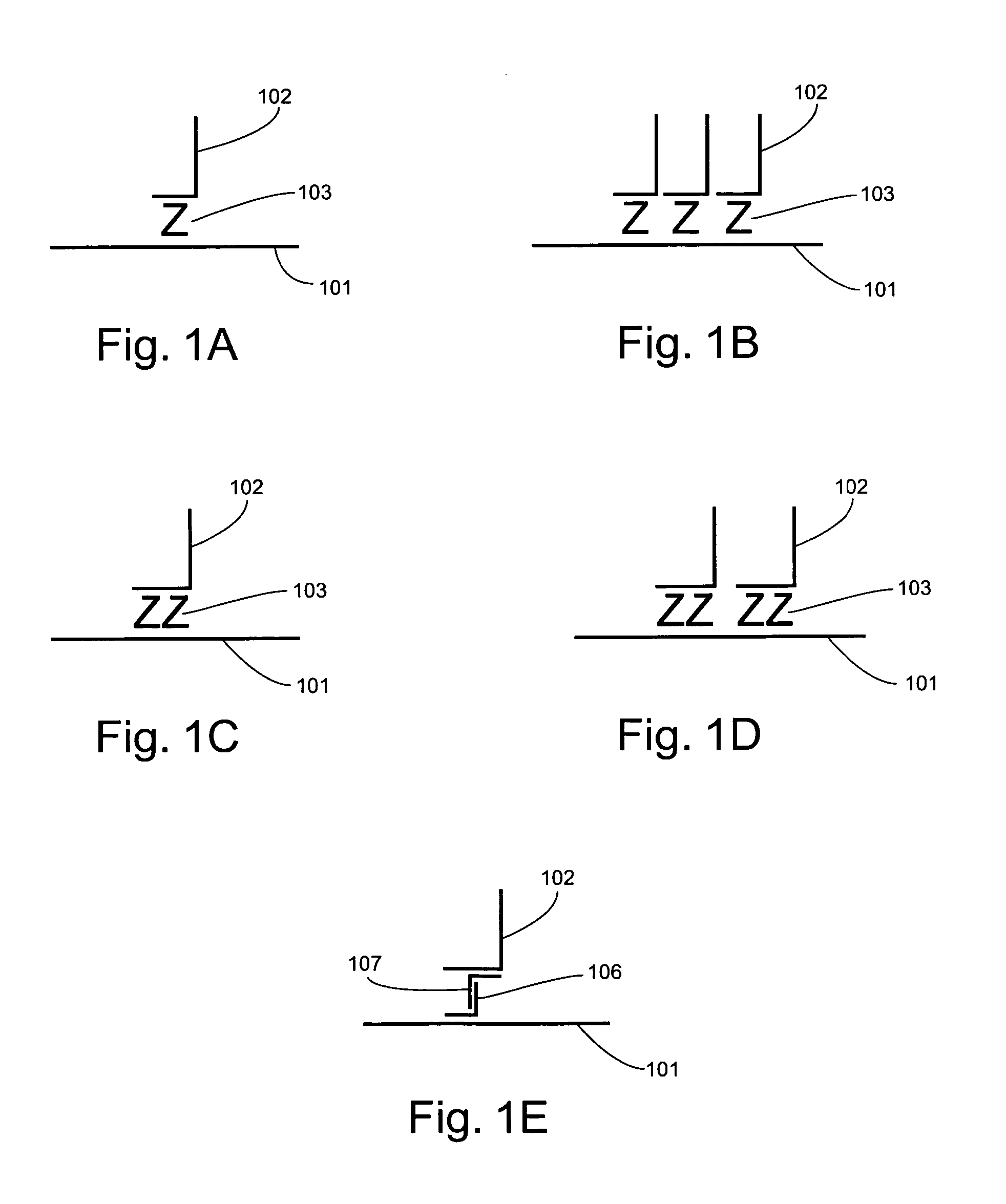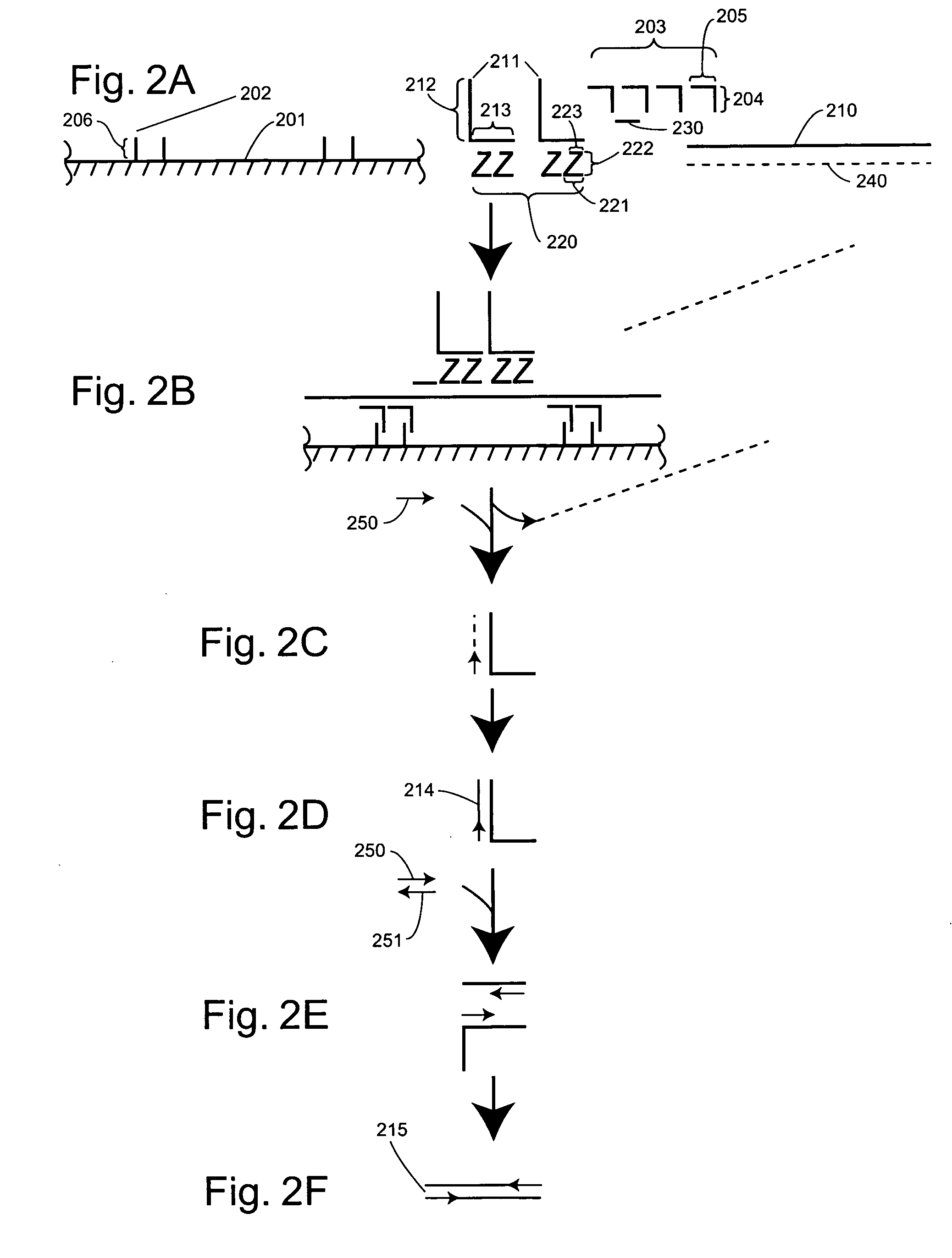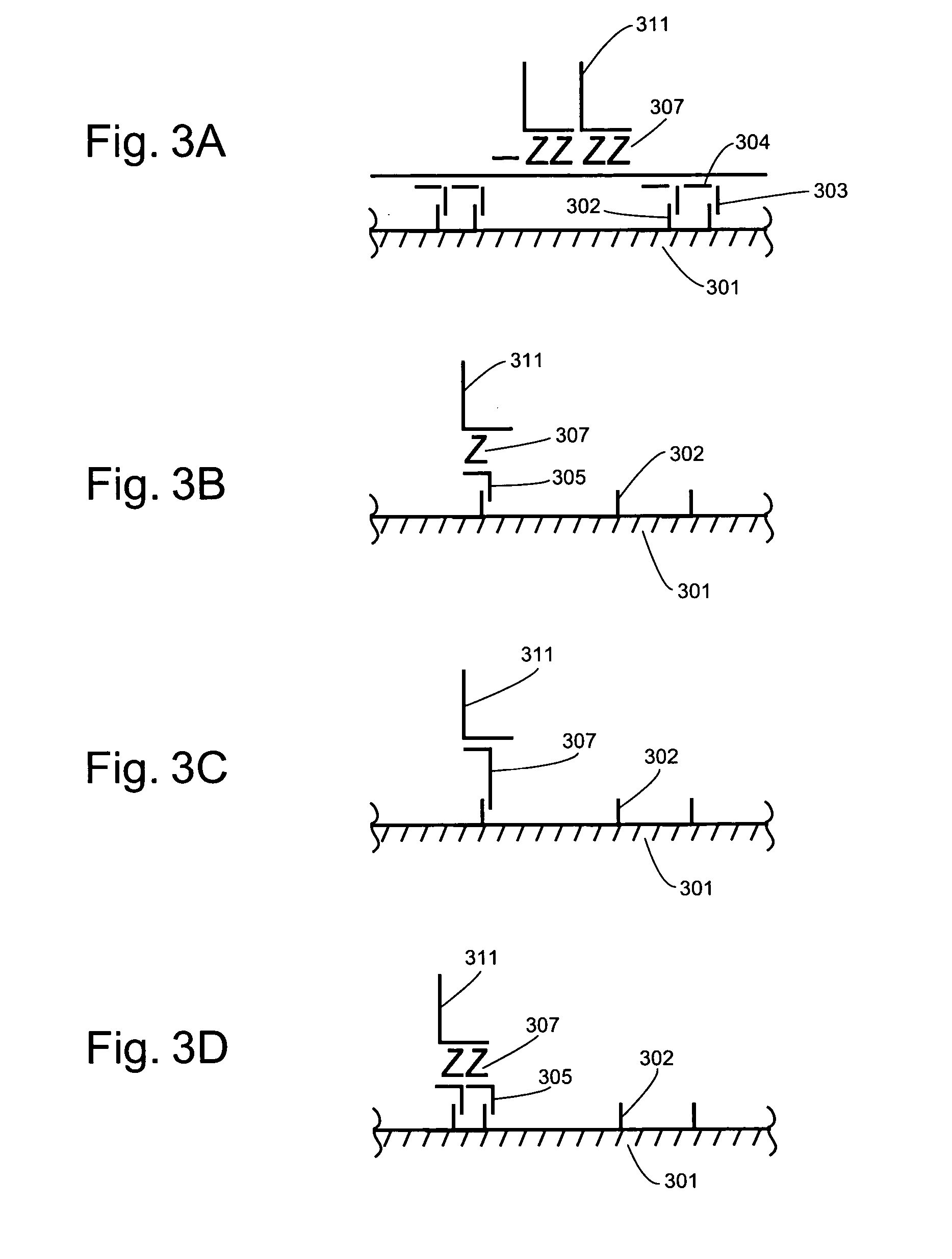Detection of nucleic acids through amplification of surrogate nucleic acids
a technology of surrogate nucleic acids and detection methods, applied in the field of nucleic acid detection, can solve the problems of limited assay sensitivity and reproducibility, time-consuming and laborious approaches, and significant drops in assay reproducibility and accuracy
- Summary
- Abstract
- Description
- Claims
- Application Information
AI Technical Summary
Benefits of technology
Problems solved by technology
Method used
Image
Examples
example 1
Detection of a Nucleic Acid Target Using Surrogate QPCR
[0121] The following sets forth a series of experiments that demonstrate detection of an IL-6 RNA target by capturing a surrogate nucleic acid to the IL-6 target and then amplifying the captured surrogate nucleic acid and detecting the amplified surrogate nucleic acid, using quantitative real-time PCR.
Materials
[0122] The sequence of the nucleic acid comprising the surrogate nucleic acid was 5′CGGGTATGGCTTTCATGTGGTTCTGGACAATGACGGTTACGGAGGTGGGCGTG GTCGTCTGCTGGGTTGGTCACGTGGGCGATCGACTTTTTAAAACGGTAACTTCA TGCTTTGACTCAG (SEQ ID NO:1); ST separate the surrogate nucleic acid (the surrogate amplicon, underlined) and the sequence U-6 that binds to the surrogate capture probe. Primers used for qPCR amplification of the surrogate amplicon were as follows: forward primer 5′ CGGGTATGGCTTTCATGTGGT (SEQ ID NO:2) and reverse primer 5′ gtcgatcgcccacgtgac (SEQ ID NO:3). In vitro transcribed (IVT) IL-6 RNA was used as the target nucleic acid, in...
PUM
| Property | Measurement | Unit |
|---|---|---|
| Composition | aaaaa | aaaaa |
| Molar ratio | aaaaa | aaaaa |
| Melting point | aaaaa | aaaaa |
Abstract
Description
Claims
Application Information
 Login to View More
Login to View More - R&D
- Intellectual Property
- Life Sciences
- Materials
- Tech Scout
- Unparalleled Data Quality
- Higher Quality Content
- 60% Fewer Hallucinations
Browse by: Latest US Patents, China's latest patents, Technical Efficacy Thesaurus, Application Domain, Technology Topic, Popular Technical Reports.
© 2025 PatSnap. All rights reserved.Legal|Privacy policy|Modern Slavery Act Transparency Statement|Sitemap|About US| Contact US: help@patsnap.com



